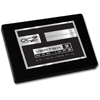- Qualcomm Launches Snapdragon 4 Gen 2 Mobile Platform
- AMD Launches Ryzen PRO 7000 Series Mobile & Desktop Platform
- Intel Launches Sleek Single-Slot Arc Pro A60 Workstation Graphics Card
- NVIDIA Announces Latest Ada Lovelace Additions: GeForce RTX 4060 Ti & RTX 4060
- Maxon Redshift With AMD Radeon GPU Rendering Support Now Available
OCZ Vertex 3 Max IOPS 240GB SATA 6Gbit/s SSD Review

When we took OCZ’s Vertex 3 SSD for a spin last month, there was no other way to sum up our thoughts than ‘blown-away’. How could such a drive get even better? With tweaked firmware and a doubling-up of NAND chips, of course. Let’s take a look at the Vertex 3 Max IOPS edition and see if its price premium is justified.
Page 9 – Final Thoughts
Given the nature of the Vertex 3 Max IOPS, we thought it would be interesting to include the original Vertex in our tests to see just how far these drives have come in a short two years. Even just last year, the performance that the Vertex 3 and Vertex 3 Max IOPS can deliver was only possible through complex PCIe cards that featured two, or sometimes four SSD controllers striped in RAID 0 arrays. Today, such performance can be had from a single SATA 6Gbps SSD, at lower cost, and with none of the caveats of the PCIe-based drives.
That brings us to the drive in question, the Max IOPS. The OCZ Vertex 3 Max IOPS certainly lives up to and will even exceed the Vertex 3 in many tasks, but it only shows its true strength in the most demanding and rigorous tests we have. For simple daily desktop use the differences are minimal and wouldn’t be noticed through normal use.
As many consumers will favor the 120GB drives for their favorable blend of price and performance, we should take care to highlight one important fact about these SSDs. Because we were “only” able to test 240GB drives, this review only shows the performance differences between the 240GB Vertex 3 and the 240GB Vertex 3 Max IOPS SSDs.
However, consumers considering the 120GB sized drives should be aware that there will, in fact, be a larger performance difference between the 120GB Vertex 3 and its Max IOPS counterpart. The difference is large enough to warrant mentioning, so keep this in mind if deciding between the 120GB Vertex 3 and its Max IOPS sibling. As we mentioned briefly on the first page, this difference results purely from the number of NAND die per channel and is easiest to understand by viewing the table we put there.

The standard 120GB Vertex 3 is available at $259 ($239 after rebate), while the 120GB Max IOPS model retails around $290 at time of this writing. The performance differences are stark in extreme usage scenarios or most types of server workloads, but unless the drive will be used in those scenarios the price premium of $30 (or $50) isn’t justified, at least by the performance alone.
Consumers looking to buy an SSD and keep it over the long haul, namely several years past the three year warranty period, might have justification for the Max IOPS due to the additional longevity the 34nm NAND will provide. And if you are looking for the absolute best performing SSD to buy, the Max IOPS is certainly it. The OCZ Vertex 3 Max IOPS offers the best performance that can be found in a non-PCIe SSD, without a single one of the caveats PCIe drives are currently forced to endure.
We awarded the OCZ Vertex 3 240GB our Editor’s Choice award for good reason; it delivered unparalleled performance at its predecessor’s price point with no caveats we could find, beyond cost of entry. The OCZ Vertex 3 Max IOPS 240GB drive is everything the original V3 is and a bit more. It offers quicker application load times and higher 4KB random IOPS, but also a price premium to match. However for buyers that plan to use the SSD for several years, long after the original three year warranty, additional longevity in combination with the increased performance may very well be worth the small price premium the OCZ Vertex 3 Max IOPS brand commends.
Discuss this article in our forums!
Have a comment you wish to make on this article? Recommendations? Criticism? Feel free to head over to our related thread and put your words to our virtual paper! There is no requirement to register in order to respond to these threads, but it sure doesn’t hurt!
Support our efforts! With ad revenue at an all-time low for written websites, we're relying more than ever on reader support to help us continue putting so much effort into this type of content. You can support us by becoming a Patron, or by using our Amazon shopping affiliate links listed through our articles. Thanks for your support!




